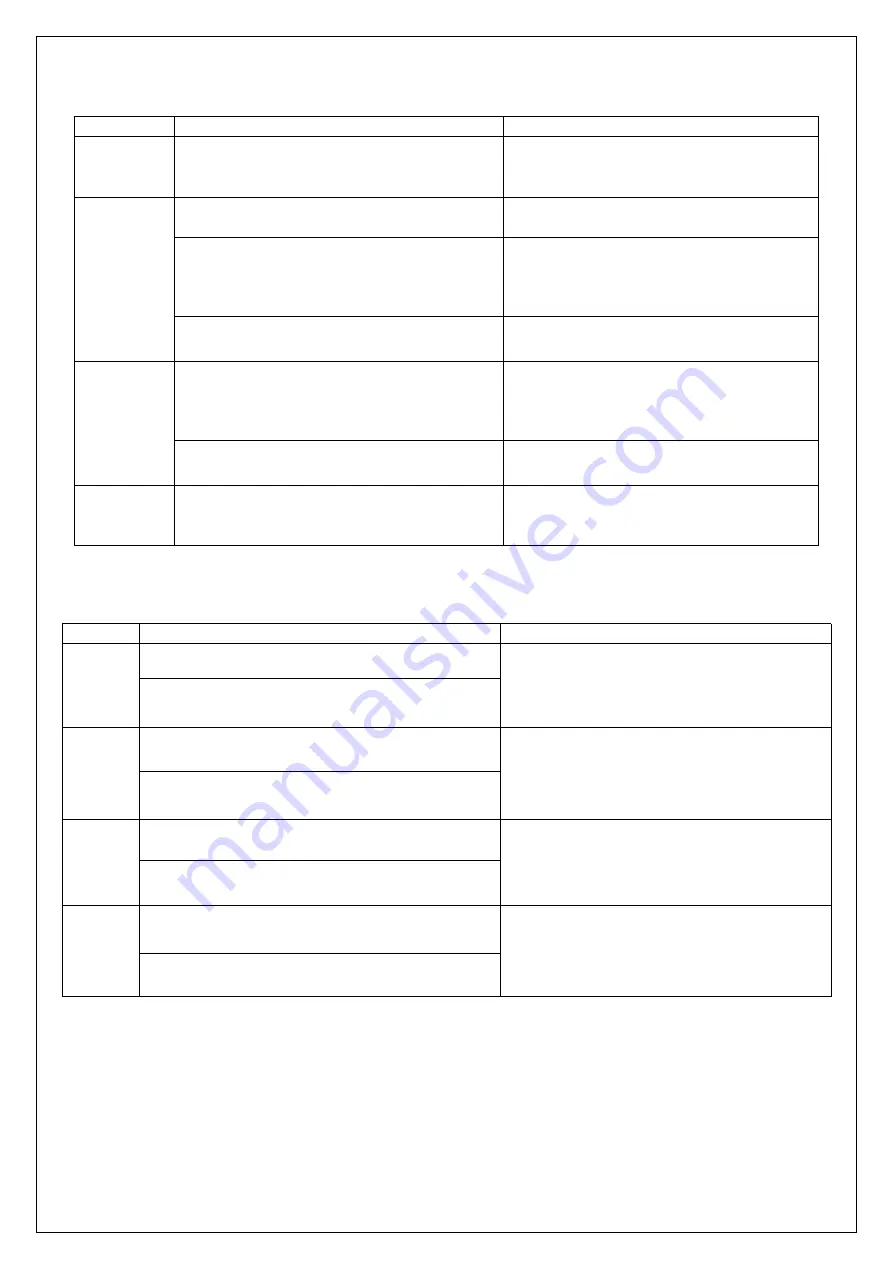
26
11.3. Wire feeder
Part
Check
Remarks
Pressure
adjusting
handle
1. Check if the pressure
‐
adjusting handle is
fixed and adjusted to the desired position.
The unfixed pressure
‐
adjusting handle leads
to the unstable welding output.
Wire
‐
feeding
hose
1. Check if there is dust or spatter inside the
hose or beside wire
‐
feeding wheel.
Remove the dust.
2. Check if there is a diameter agreement of
wire and wire
‐
feeding hose.
Non
‐
agreement of the diameter of wire and
wire
‐
feeding hose possibly leads to the
excessive spatter and unstable arc.
3. Check if rod and wire feeding groove are
concentric.
Unstable arc possibly occurs.
Wire
‐
feeding
wheel
1. Check if there is an agreement of wire
diameter and wire
‐
feeding wheel.
Non
‐
agreement
of
wire
diameter
and
wire
‐
feeding wheel possibly leads to the
excessive spatter and unstable arc.
2. Check if the wire groove is blocked.
Replace it if necessary.
Pressure
adjusting
wheel
1. Check if the pressure adjusting wheel can
rotate
smoothly,
and
it’s
physically
complete.
Unstable
rotation
or
physically
incompleteness of the wheel possibly leads to
unstable wire feeding and arc.
11.4. Cables
Part
Check
Remarks
Torch
cable
1. Check if the cable of torch is twisted.
The twisted torch cable leads to unstable wire
feeding and arc.
2. Check if the coupling plug is in loose connection.
Output
cable
1.
Check if the cable is physically complete.
Relevant measures should be taken to obtain
stable weld and prevent the possible electric
shock.
2.
Check if insulation damage or loose connection
exists.
Input
cable
1. Check if the cable is physically complete.
2. Check if insulation damage or loose connection
exists.
Earth
cable
1. Check if the earth cables are well fixed and not
short
‐
circuited.
Relevant measures should be taken to prevent
the possible electric shock.
2. Check if this welding equipment is well grounded.




































